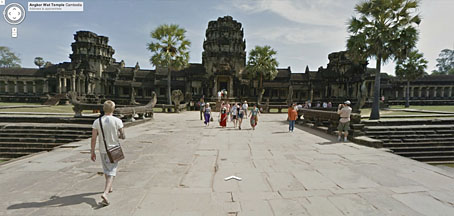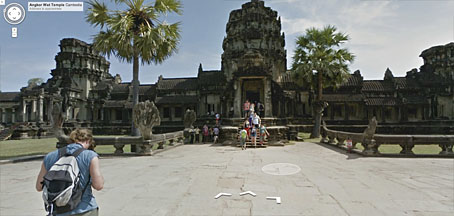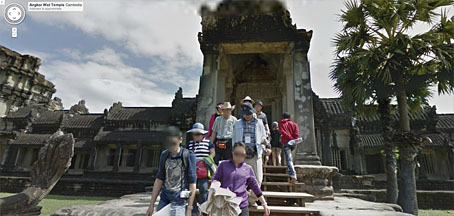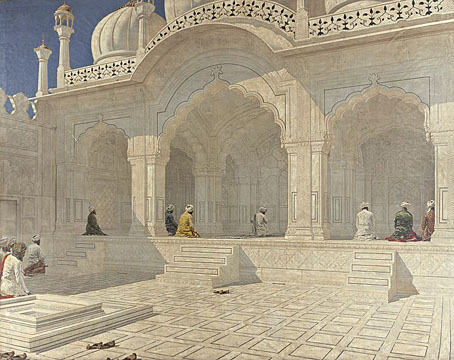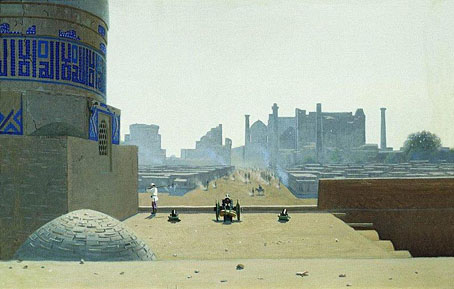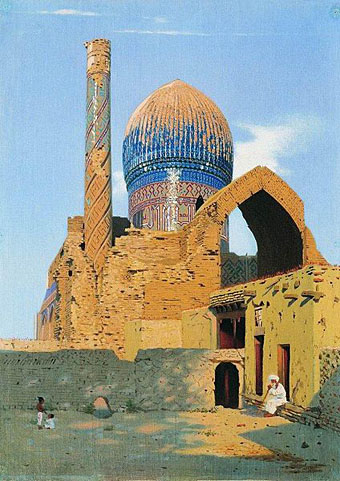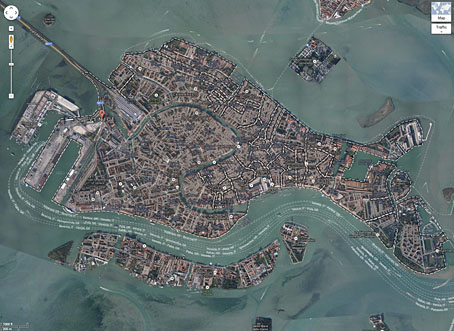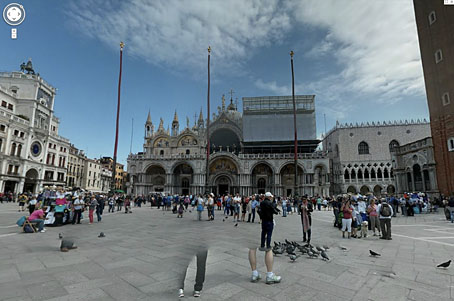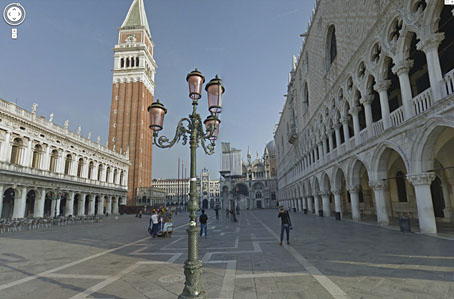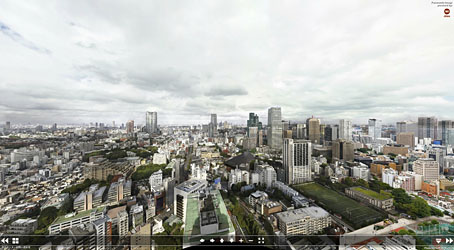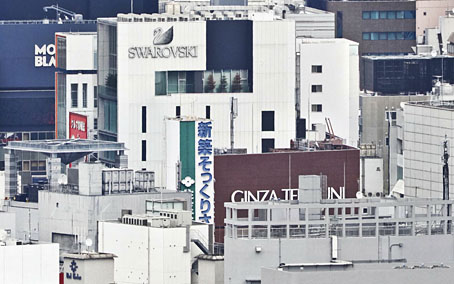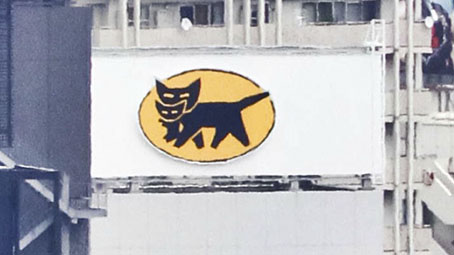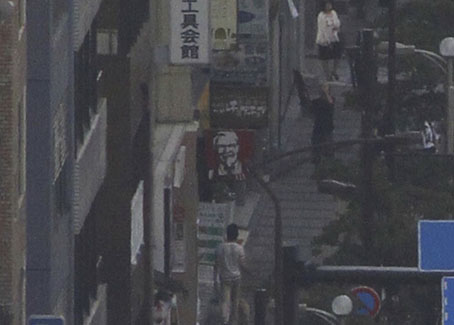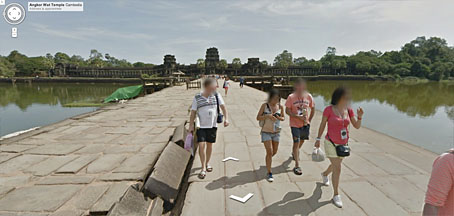
The ruined temple complex of Angkor Wat is another of those places for which I maintain a cult fascination despite never having been there. I’ve posted links to panoramas of Angkor Wat in the past but Google recently added the complex to their Street View catalogue, so you now have the opportunity to see the fabled Nagas in their natural habitat: surrounded by garishly-clad tourists.
A large part of the attraction of places such as this involves the promise of deterioration and isolation, two qualities kept remote by the site’s World Heritage status. I imagine a visit to Angkor would be like the visit I paid to the ruins of Hadrian’s villa outside Rome, the well-tended bones of a formerly splendid construction. Hadrian’s villa is still worth a visit even if you won’t ever see it overgrown by foliage the way it was in Piranesi’s day.
